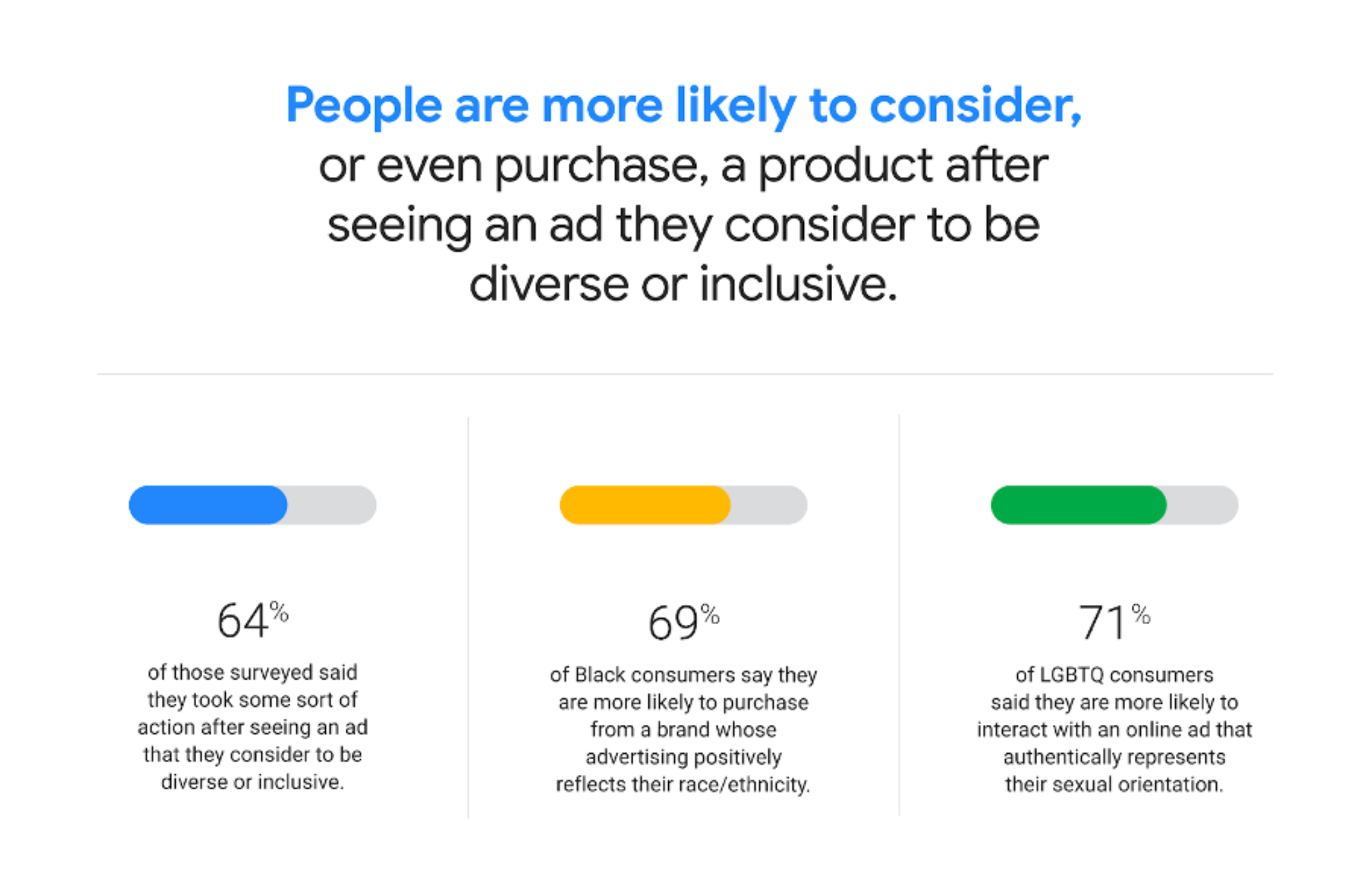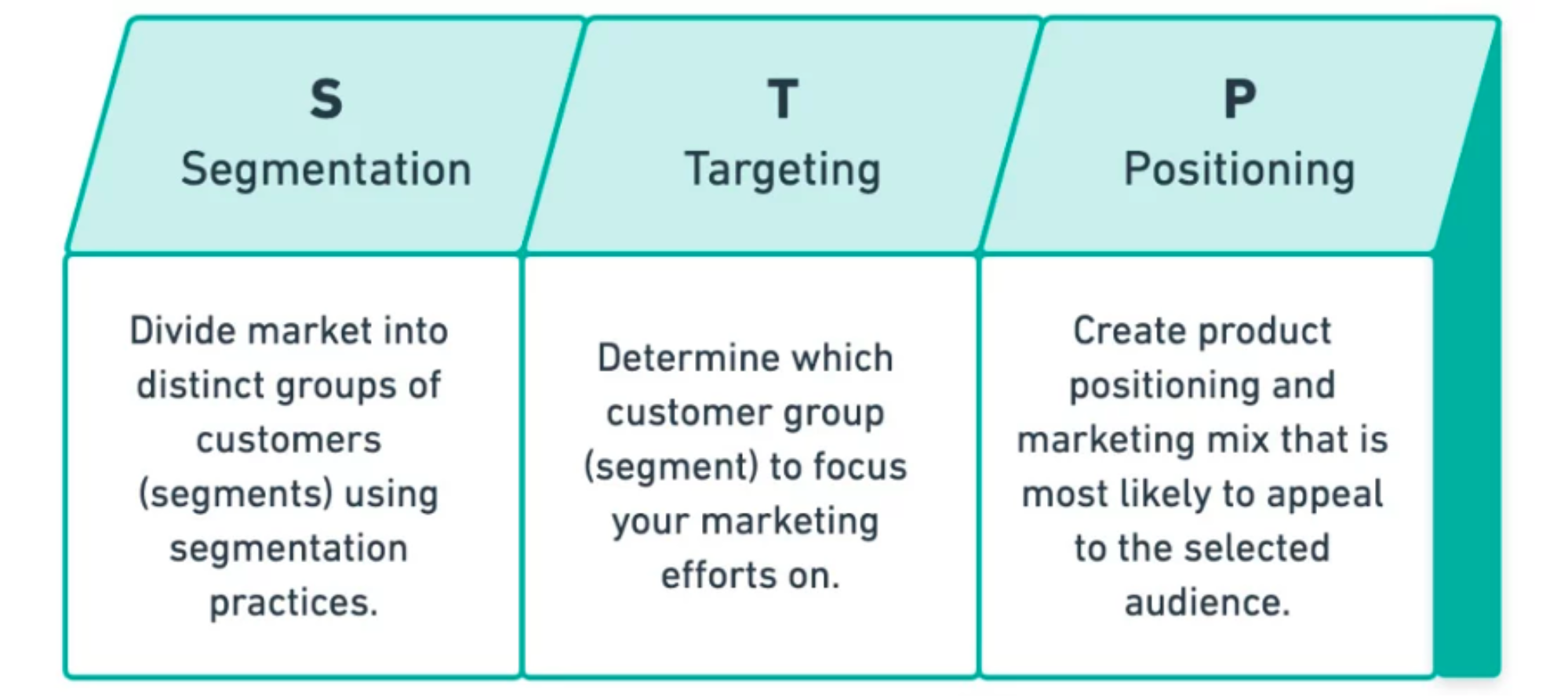Reaching out
Inclusive marketing strategies for the electric vehicle market
You don’t have to be a special someone to own an electric vehicle (EV). They are for everyone - and the more people buy them, the greater our planet will benefit. This message can be emphasised through the use of inclusive marketing.
Just to show how important it is to resonate with all corners of the EV market, a survey found that 41% of people who turned away from a brand were due to poor inclusivity and diversity .
If you haven’t already started using inclusive marketing, then you may become part of that statistic. Fortunately, this article will guide you through what inclusive marketing is, its benefits, and how you can use it for your next EV campaign.
What is inclusive marketing?
Inclusive marketing aims to make people feel welcomed and valued no matter who they are or where they come from.
Everyone has a comfy seat waiting for them in an EV, but they need to believe it first. This is where inclusivity comes in, and it focuses on not leaving anyone out when advertising products or services.
So, when creating marketing strategies, the ultimate aim is to connect with as many people as possible by embracing inclusivity to make your message more relatable and effective.
Benefits of inclusive marketing
Inclusive marketing has many benefits that apply to both the customer and the business. Here are some of the most important ones all companies should be aware of.
It feels personal
You’ll connect better with customers when marketing techniques speak directly to them. When you tap into what matters to them, they will listen, engage, and interact with your brand. In some cases, they will tell friends and family about your message.
Customers will remember your marketing efforts for longer if it’s personalised and authentic. It shows that you understand their qualities as potential customers, which forms a sense of loyalty. Having this connection makes retaining customers much easier and boosts your company’s reputation as a result.
Nothing is wasted
No matter how much money is put into the project, if it’s not inclusive, it leads to a big waste of resources, time, and talent. This is due to focusing on the wrong audience and neglecting groups who would have loved your EV.
But, by being inclusive and splitting your customers into different segments based on what they like, what they do, and other attributes, you can make better-informed decisions on spending resources.
Beats competition
Getting ahead of the competition is important, but it’s not easy if you’re trying to attract the same customers. Inclusive marketing allows you to reach users your competitors haven’t and tap into a whole new market.
Long-term growth
Thanks to these benefits your company’s chance of long-term growth is improved. By staying in tune with your intended market, quickly adjusting to trends or shifts in each group is much easier. This all contributes to the perception that you are a reliable, trustworthy EV company.
How to make an inclusive EV marketing strategy
When you’re ready to create an inclusive EV marketing strategy, key factors must be considered. These steps will ensure your method resonates with a wide audience and fosters a sense of belonging.
1. User representation
The most important part of an inclusive strategy is showing a mix of users interacting with and benefitting from your product. Having diverse representation demonstrates that everyone can share in the positive EV experience, no matter their ethnicity, gender, or mobility.
For this stage, it is important to delve into who makes up your audience and learn as much about them as possible. This includes their struggles, needs, values, and more. If you want to represent them in your marketing, you can’t afford to get these details wrong.

Put people from various backgrounds, cultures, and incomes who use EVs differently in your advertising. In fact, those who don’t feel culturally represented in advertising make up 54% of customers.
However, be careful not to use stereotypes or assumptions about your audience, as this will come across as ignorant or patronising in your marketing and lead to a negative reputation.
2.Highlight user similarities
Take time to focus on the shared aspect among your customers. Highlight what they have in common such as what they enjoy about using EVs. By showing these similarities, you create a sense of unity and belonging within your customer base.
When people see these shared traits in your marketing, it resonates with them personally, fostering a deeper connection and increasing their interest in your brand.
Aim to celebrate their similarities and underline the idea that they are part of a larger community brought together by EVs.
3. Clear and simple language
Use simple words in your strategy so that everyone can understand what is being said. It may be tempting to use complex jargon to sound informed, but, in most cases, this will only create a language barrier. Also, be careful not to use seemingly innocent terms that are offensive in other cultures.
Clear, straightforward language ensures a sense of inclusivity where everyone can relate and engage with your marketing content.
This promotes a better understanding of your EV and allows a wider range of people to appreciate and connect to what you’re saying.
4. Have accessible digital channels
Digital channels are the platforms used by your brand, such as smartphone apps, websites, and email.
These channels are a form of communication that bridges the gap between the company and the customer. This is why making them accessible is so important, especially regarding inclusivity.
To do this, have options for disabled users and a layout that is easy to navigate. Also, take this time to think about imagery with this in mind:
real people do not look like Barbies; authentic representation shows natural physical features
thorough research prevents being culturally insensitive; take care not to offend a culture with appropriation
diverse stories of experiences encourage emotional connection
5. Listen to feedback
Take time to hear people’s thoughts, opinions, and suggestions about your marketing strategy. By doing this, you gain valuable insight from those who matter most and can then adjust your approach to only get better and better.
Social listening is a great way to gather honest feedback. It involves monitoring social media content, such as your company’s hashtags or reviews. Being a fly on the wall allows you to hear those for and against your brand and why people feel that way.
6. Reflect values in company culture
You can promote inclusivity all you like, but if you don’t practise the same values in the workplace, it comes across as insincere. Company values are not just for advertising purposes: they should be the principles that guide your decisions.
Honouring these values behind the scenes allows for a cohesive brand identity. This supports your commitment to inclusivity and reinforces the idea that your marketing is authentic.
Customer segmentation and inclusivity
With inclusive marketing, you need to think about lots of different people, not just one type. Techniques such as cluster analysis can group potential EV customers together based on what they have in common.

This is called segmenting and is done based on your company’s target market. When we segment the EV market, finding similarities and differences is straightforward and helps with marketing later down the line.
Here are some of the ways that customers can be segmented:
Demographic
Sorting people by their demographic groups them by gender, age, income, and other lifestyle factors. Age can play a big role in the understanding of technology and the reason behind wanting an EV. For example, a teenager may be worried about the climate, whereas an older person is more focused on a car’s usability.
Geographic
This segmentation is based on locations as far apart as countries or as close as neighbourhoods within the same city. Terrain, charging facilities, and awareness all vary depending on the geographical location.
Geographic landscape also looks at the climate of an area. EVs don’t perform as well in hotter countries due to the thermal stress on batteries. Similarly, batteries deplete faster in colder climates due to the energy expended to heat the car and its interior.
Behaviour
Grouping people together based on their behaviours and attitudes towards EVs can influence marketing strategies such as charging patterns, hobbies, and concerns. Behaviour can also play a part in their beliefs behind EVs. Are they open to learning new things or set in their ways?
Marketing to different customer segments
The EV market is large and varied, so breaking it down into smaller chunks is essential. But how do you begin to speak their language?

As a guide, we have listed three potential buyers you’d come across when advertising an EV.
The sceptics
To connect to EV sceptics, you would focus on the advantages of owning an EV in terms of distance, ease of use, and environmental impact. Also, highlight the money saved from using less fuel and needing fewer repairs.
As well as this, you can share real-life experiences from customers who were initially sceptical of EVs, but changed their minds after owning and driving one. This helps people on the fence see both the practical and positive side of EVs with real testimonials to prove it.
Tech enthusiasts
To resonate with the tech enthusiast segment, it would be best to focus on advanced EV features of your cars such as high-tech, innovative specifications that make them stand out from the rest. Keeping well-informed with competitors about what technical features they are offering is important as you need to be one step ahead.
If this were any other customer segment, in-depth demonstrations of remote app controls or seamless device integration would only make them feel ill-equipped to appreciate the EV. However, in this instance, it will attract those looking for the most technologically advanced ride.
Practical users
Engaging with practical users should focus on the everyday benefits of EVs. This can include how easy it is to charge at home or on the go, battery length, and low maintenance costs. This aligns with those looking for the best way to get from A to B.
Families typically fall into the practical user segment, so demonstrating the capacity and comfort of EVs will resonate with them. Range anxiety is another big factor that may put off practical users.
To attract this audience, EVs should fit seamlessly into their life. Any hint that they are an inconvenience could discourage them completely.
Difference between segmenting and targeting
Customer segmentation is important in marketing, but can often be mistaken for targeting. While they have their similarities, both come into play at different stages. To understand the importance of each, here is a brief rundown:
segmenting involves dividing a big market into smaller groups, each sharing common wants, behaviours, and traits
targeting is choosing a customer segment to focus on, using their traits to make targeted advertisements
Use segmenting, targeting, or both?
The answer is both - using a combination of segmenting and targeting is key for making your marketing inclusive.
In terms of EV marketing, you must begin segmenting to split the already huge potential consumer base into smaller, more manageable chunks. This may be the climate-conscious, tech enthusiasts, and practical families.
Then, a group is singled out and focused on when creating marketing campaigns so that the message resonates with them. By doing this, there is a much higher chance that the targeted group will pay attention and feel connected.
All in all, segmenting by itself is not valuable, but combining it with targeting makes for a relatable, engaging, and inclusive strategy.
Segmentation, targeting, and positioning
Now that you have segmented and targeted your users, it’s time for the positioning, which is the final stage before releasing a marketing campaign. This focuses on how the targeted group will receive the advertising created specifically for them.

In positioning, certain features of the EV, like range or parental controls, are highlighted depending on the target market to achieve a unique value proposition (UVP).
A UVP makes your company stand out from competitors because the audience is seeing a unique selling point that others don’t have. Without segmentation and targeting, this wouldn’t have been possible.
To help identify gaps in the market, a product positioning map can be made. Here is an example of one showing the UK car market.

This position map, along with the attributes identified in the segmentation process, will make for effective targeted advertising. There is no use in spending money and resources on a campaign that has already been done or didn’t provide great results.
Measuring the success of inclusive marketing strategies
Measuring the success of your marketing strategy is important for seeing how effective it was at promoting inclusivity, diversity, and your product as a whole.
The technique to do this is a bit different from traditional marketing strategies as it focuses on the impact on diverse groups and long-term positive brand perception.
To find out if your inclusive marketing strategy has been successful, there are a few steps to take.
1. Have clear goals
To measure success, you must already have some goals in place. This could be to improve how many people interact with your social media post, set up accounts, or buy an EV. Be realistic with goals; the more achievable they are, the better you can measure growth.
2. Use key performance indicators (KPIs)
KPIs are measurements used by businesses to see how well they are performing in certain areas. Typically, KPIs focus on the following:
brand reputation
customer engagement
customer retention
company revenue
KPIs are dependent on your unique goals as a company. They are also split into different areas of the company, such as customer, financial, and employee.
3. Gather and analyse data
Once you have clear goals and KPIs, it’s time to collect the relevant data. This can be done with customer surveys and feedback forms to get honest opinions on people’s experience of your brand.
When collecting this data, you must protect it and use it properly. If you don’t, you will lose the trust of your customers, gain a bad reputation, and face legal issues.
Whether qualitative or quantitative, the way you measure data should find patterns, trends, and areas of improvement.
4. Make changes if needed
By analysing customer data, you can adjust the marketing strategy to make it more inclusive. These changes can be small tweaks or dramatic ones like scrapping a strategy altogether. Either way, it will save you money in the long term if you stay one step ahead instead of trying to fix it when it’s too late.
Final thoughts
Inclusive marketing is essential for getting as many people as possible behind the EV wheel. It involves catering to a wide audience and splitting them into manageable groups targeted with diverse advertising.
By paying close attention to the preferences of potential customers, you can make them feel seen and valued. This strategic marketing technique saves money as you are not wasting it on the wrong people or singling groups out.
But remember, inclusive marketing should also run deep into the company culture. With a diverse team, you can get first-hand knowledge of what resonates with people. Additionally, customers will see that you mean what you say and will, therefore, trust your word.
